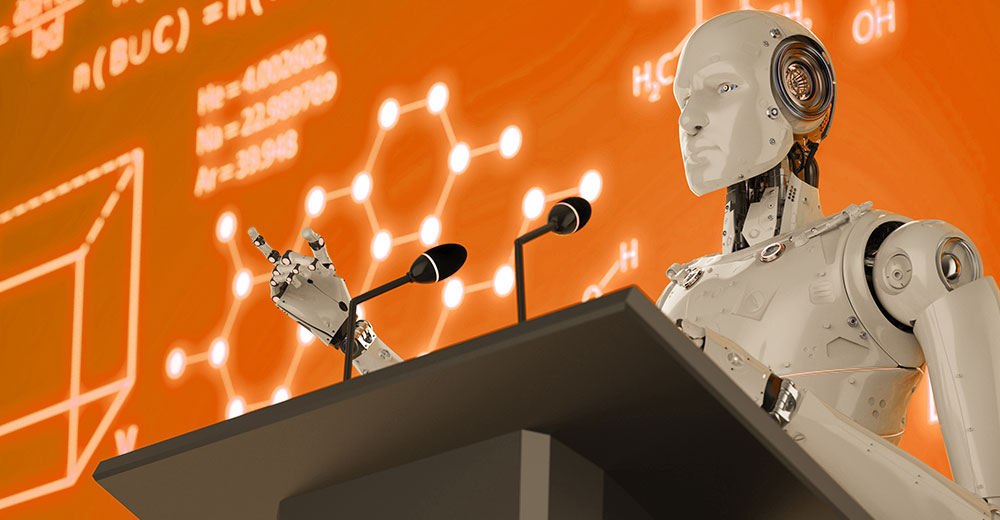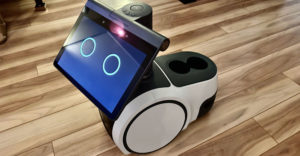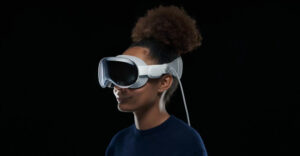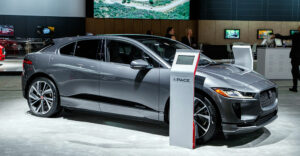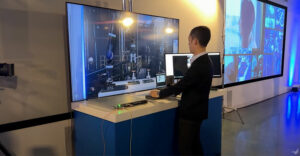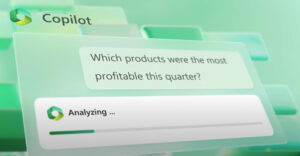Robots have been around for decades, but they’ve been mostly stupid. They were either remotely controlled by humans or ran fixed scripts that allowed for virtually no latitude in terms of how they operated or what they did. Even though I was born in the year Robby the Robot became famous, the robots I grew up with weren’t anything like Robby. They were about as smart as an old toaster.
Fortunately, that’s changing. Robotics has advanced considerably over the last decade, partially thanks to the leading work Nvidia has done with autonomous vehicles, much of which translated into autonomous robotics. This year at CES, the top robots all seemed to have Nvidia brains, starting with a robotic tractor from John Deere and ending with GlüxKind, an AI-powered baby stroller I want to buy for my aging dog.
Let’s talk about the Nvidia-powered robots at CES this week. We’ll close with my Product of the Week, a wireless microphone that may keep me from getting into a fight on my next plane trip.
John Deere Autonomous Tractor
John Deere won the Best of Innovation award for its robotic tractor.
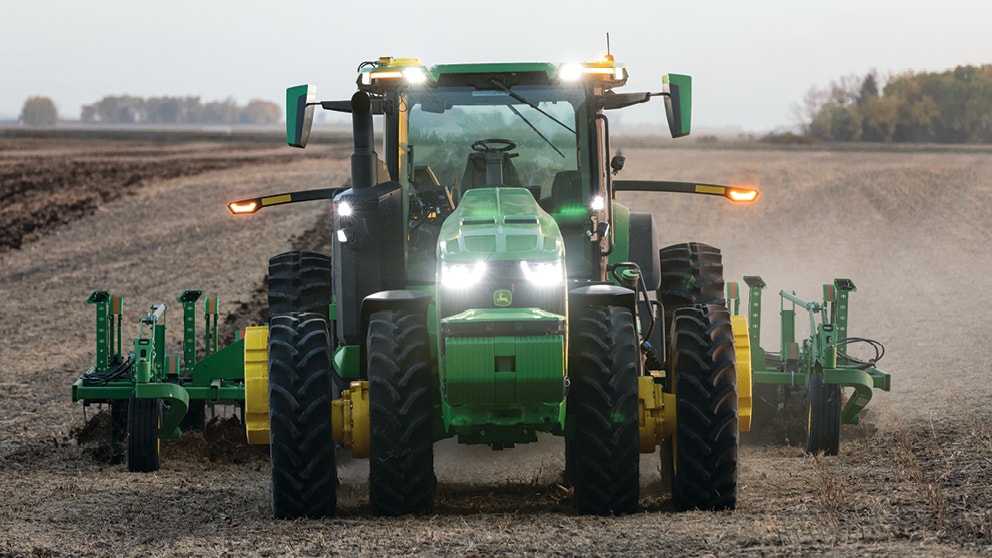
John Deere Fully Autonomous Tractor | Image Credit: Deere & Company
I grew up working on a farm. While driving a tractor was fun at first, it got tedious very quickly.
The heat and the repetition of driving in long rows were broken up only by the excitement of an equipment failure or the potential for a grizzly death should I fall asleep and fall off the tractor. That actually happened years later to the head of my division at IBM, who died when he fell off his tractor into a plow.
John Deere’s tractor won’t get bored, tired, or die, so farmers can work on other things that need doing, given that staffing farms has become a big problem of late. Historically, robots weren’t affordable on farms because labor was cheap. But you can’t get those workers now, and getting locals to work on a farm is just as difficult.
So, if farmers want to keep operating, they need to automate, suggesting the farm of the future may be run entirely by increasingly intelligent robots and robotic equipment. So, this tractor may be critical to ensuring we have food on our tables in the future.
Agrist Harvesting Robot
Another robot was from Agrist. I’m not a fan of this one mainly because it was built to harvest bell peppers and bell peppers trigger my gag reflex. Just the smell of the things makes me feel ill. Still, if I had to harvest bell peppers (clearly one of my concepts of hell), I’d appreciate a robot like this that kept my hands, nose, and tongue well away from the horrid things.
Sometimes you have to grow stuff you don’t like, and this robot would assure me that if I still had a farm — which thankfully I don’t — I could grow bell peppers and harvest them without ever getting that close to the darn things.
Seriously, this robot is designed to work in indoor factory farms, which will be crucial to the survival of countries being badly impacted by climate change and losing the ability to farm as a result. Robots like this will be critical to sustaining humanity as the climate makes outdoor agriculture obsolete.
Skydio Scout Drone
Drones were also covered, with the Skydio drone standing out for its Scout drone.
Skydio is a fascinating drone company. It even has a docked drone solution that reminds me of the old Green Hornet TV show. Can you imagine having one of these on your car so you can check what has caused the traffic jam you are stuck in? Or envision a police officer on a high-speed chase being able to launch one of these and have it autonomously and secretly follow the suspect, so they didn’t have to risk life and limb chasing them in a car.
Skydio drones are used in law enforcement, fire and rescue, power line inspection, construction, transportation, telecommunications, and defense.
Skydio is a powerful company with an increasingly powerful set of autonomous products that may save your life one day, making this potentially one of the most important products launched at CES this year.
GlüxKind ‘Ella’ AI-Powered Stroller
I was looking for a powered stroller for my aging dog just a few weeks ago. When the dog gets tired on walks, we put her in a stroller, but pushing the thing up hills gets old. When my wife walks all three of our dogs alone, managing the stroller at the same time has become tedious and potentially unsafe.
When empty, the GlüxKind Ella stroller will follow you (I don’t want to imagine a runaway with a baby in it). When occupied, it’s battery-assisted to go up hills where my wife often struggles (I’m currently her solution for going up hills).
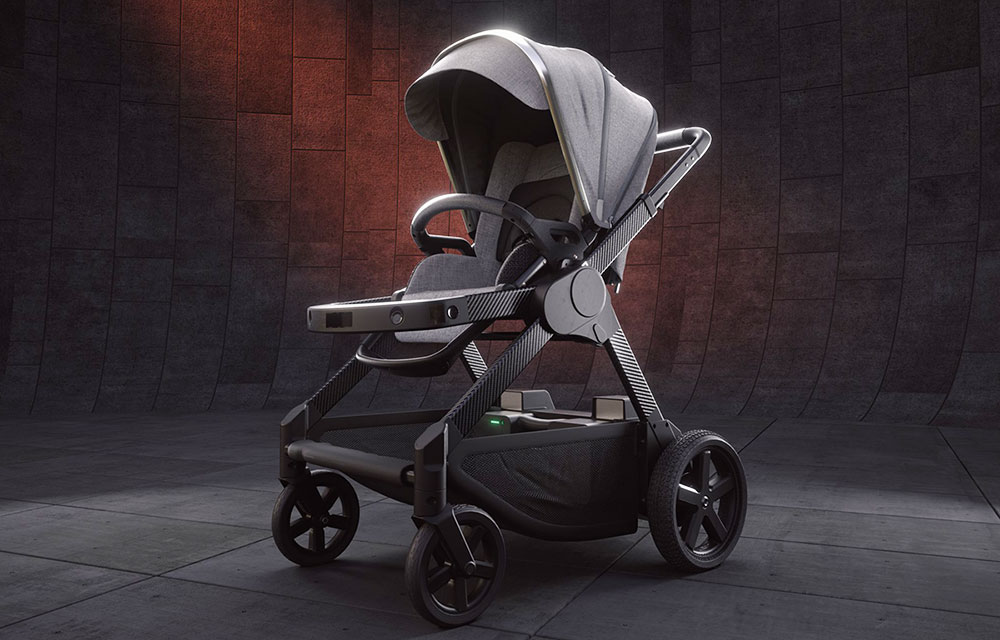
Glüxkind was named a CES 2023 Innovation Awards Honoree for its “Ella” smart stroller. | Image Credit: Glüxkind Technologies
Sadly, its current configuration won’t work for my dog. Otherwise, I’d probably order one. But trying to teach a 14-year-old dog to sit up in a stroller like a baby is a non-starter, though it would likely give others a bit of a shock when we walked by. Still, for parents with several children or walking their dog and kid at the same time, this powered stroller could be a winner.
Now, if they’d just come up with a pet configuration, I’d be in.
Neubility Delivery Robot
The Neubility self-driving robot, named Neubie, is one of the new delivery robots coming to market.
I’m a bit concerned about this class of robots. In trials, kids and some adults often abuse and break into these robots when in use. The Neubie is bigger and more robust than many I’ve seen, but I speculate it may need some kind of defense or high-speed escape capability to work in the real world.
The onboard cameras should catch and record anyone that harms it, but it may be a while before people just leave the thing alone to do its job. For this reason, Neubility is smartly targeting golf courses where the robot can be better protected. Places like resorts, hospitals, and factories will be where robots like this can operate most successfully.
I’ll wait to see if they develop one with a built-in taser before I put a lot of faith in delivery robots outside of controlled environments like golf courses and resorts.
Still, once accepted and protected, robots in this class will likely make delivery to homes by humans a thing of the past, better assure you are home to receive the delivery and make life much harder for porch pirates, whom I hate with a newly found passion after this past Christmas.
Seoul Robotics LV5 Control Tower for Autonomous Parking
Seoul Robotics showcased a Level 5 control tower, an interesting alternative to the typical way autonomous cars are currently configured. It uses infrastructure external to the vehicle to manage the automobile, potentially enabling any current-generation car with Level 2 technology that is connected to that grid to operate autonomously.
This variant is interesting because, rather than thinking of autonomous cars like they are now, it thinks of them more like how an aircraft traffic controller does by monitoring all the cars in range and directing from a central resource. Eventually, this technology could replace things like traffic lights, effectively moving them into the vehicle when it is being driven by humans and making them invisible to people riding in autonomous cars.
Not only could this approach be much cheaper than putting this technology in every car, but it would also shift maintenance from the car owner to the government, which may maintain it better, though this isn’t always a given.
It could also help ensure fewer catastrophic problems and allow older cars to better interoperate with newer autonomous vehicles while providing a viable low-cost upgrade for those that wanted to make recent cars that are currently not autonomous work as if they were. This is arguably the most innovative approach to the autonomous car problem I’ve seen, and I’m fascinated by it.
Whill Autonomous Wheelchair
Finally, Whill presented its autonomous wheelchair designed for people with limited mobility and sight. Aging or partially disabled folks who also can’t see well are pretty much dependent on others because the white cane approach doesn’t work in wheelchairs.
Winner of the Best of Innovation award in the accessibility category, this wheelchair has unique high-traction tires and a rear bin for packages or groceries. It looks a bit like something out of a science fiction movie.
With a range of 12 miles, the ability to climb over 3-inch objects like curbs, and very high stability for rough streets, this could be ideal for aging seniors and those with sight and mobility problems. At 5.5 mph, it is anything but blazing fast, but if you have a mobility and sight problem, you probably don’t want blazing fast.
Weighing in at 250 pounds, it is lighter than many motorized solutions for those with limited mobility, and its autonomous capabilities provide independence that some people can’t get any other way.
Wrapping Up
This list of robots at CES is not exhaustive, but I realized that most of the robots I looked at had Nvidia brains, so I figured I’d use that as a theme for this column. The autonomous robot revolution is just beginning, with the hope we never go so far as to make the book Robopocalypse real.
Over the next decade, these will be coming out at an increasing pace, and Nvidia has placed itself at the heart (well, maybe more at the brain) of these efforts. Eventually, we may be like George Jetson and have a Rosie-like maid that is autonomous, robotic, and with just the right level of snark.
At CES, I saw our robotic future. I can’t wait until I have my own Rosie!

Mutalk VR Microphone
Before Christmas, I took my last trip of the year to New York. Before takeoff on the return flight, I had to do a radio interview over the phone. While the person next to me was okay with this, the guy in front of me was not and seemed to be about to punch me out because I was talking too loudly. I have a trained media voice, and it carries a long way.
Having a solution I could use when doing these things could be a lifesaver, particularly if we get to the point where we are making inflight phone calls and don’t want to piss off or accidentally entertain everyone else on the plane with our conversations — let alone accidentally share confidential or personal information.
The Mutalk VR microphone was one of two products launched at CES that can contain your voice when speaking.
I’m picking the Mutalk because it was also designed to work with a VR rig which, given I play in VR, made it more attractive to me than its counterpart, the mask by Skyted, which was far larger and explicitly designed for inflight use. Frankly, I’d be fine with either, and I must admit the full Mutalk rig might also be a bit much on a plane.
In the end, having something I could use for calls in areas with lots of ambient noise or when I need to speak loudly might get me punched out would be a godsend. So, the Mutalk leakage voice suppression microphone is my Product of the Week.

